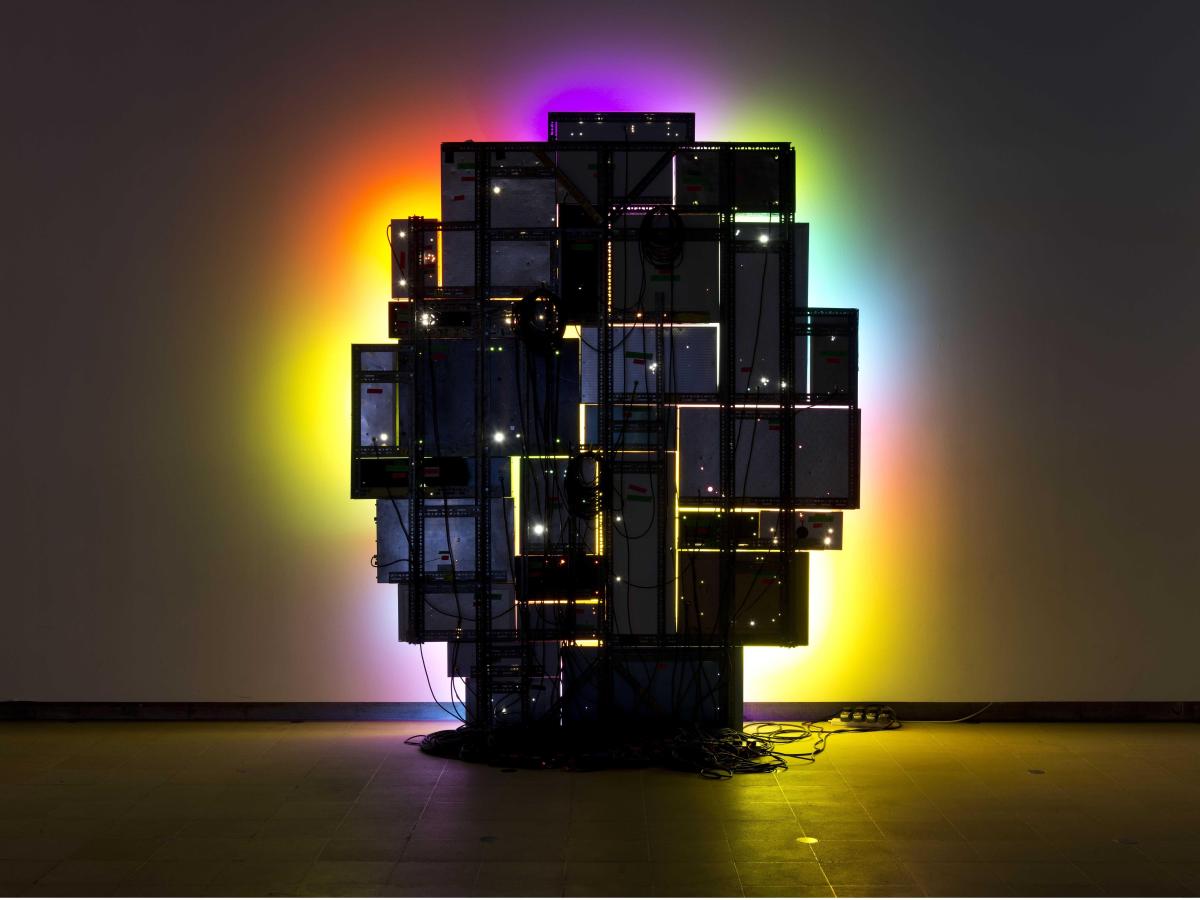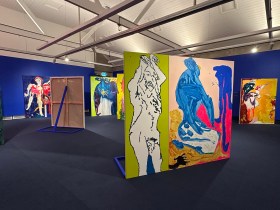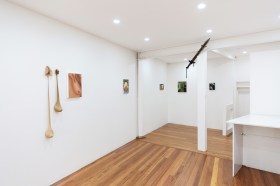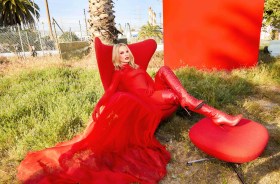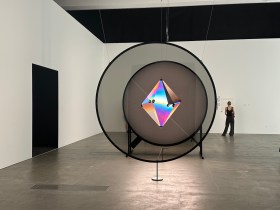David Batchelor Magic Hour, 2004/2007. Installation view Light Show, Hayward Gallery, 2013 © the artist 2015. Photo: Marcus J Leith
This year is the UN/Unesco International Year of Light, and the Museum of Contemporary Art Australia (MCA) has flicked on the switch for a season of programs centred on Light Show. The exhibition is curated by Dr Cliff Lauson and organised by the Hayward Gallery, London. Already having wowed the crowds in London and Auckland, it promises to draw in Sydney audiences with works that will surprise, delight and inspire deep contemplation.
The show consists of 19 works by 17 artists, and as Lauson explained, ‘each of those works is a tremendously large and involved installation.’ Blair French, Director, Curatorial & Digital at the MCA, elaborated: ‘They range from works that are quite humble in material, through to works that are quite dazzling and complex in their realisation. But conceptually underpinning the exhibition are ideas about the way in which light binds our sense of self in a space.’
If you think you’re familiar with the MCA’s galleries, think again. ‘There are works that have spaces built specially for them, and there are works that are really created by the space,’ said French. ‘Some of these works really illuminate and draw attention to the building in ways we’ve never noticed before. It’s a dazzling show that makes you think about the building you’re in and how you move around a space.’
The earliest works in the exhibition date from the 1960s, a seminal period in the use of light as a medium. Artists were discovering and using newly mass-produced materials such as neon. Sculptural practice was shifting from a focus on objects to environments and the viewer’s relationship with space, as an interest in perceptual psychology was taking hold.
The result is what Lauson described as ‘some of the strongest installation-based artworks that you can really step into and immerse yourself in. As the viewer your experience becomes the work. The work is hinged on human perception, [its] subtlety, changes and mutability.’
One such work is Chromosaturation by Caracas-born, Paris-based artist Carlos Cruz-Diez. The work, originally made in 1965, consists of three adjoining rooms, each coloured with an array of 60 fluorescent tubes. While each room is lit in a particular colour (‘so piercing it’s almost painful,’ Lauson warns), the viewer’s experience may not be so simple.
‘The longer you spend in each of these sections, the more your eyes try and adjust and try to make everything white again. This causes the colours in the other two rooms to become brighter…an interesting phenomenon as you cross back and forth between the two rooms.’ As with all the works in the exhibition, Chromosaturation rewards slow looking.
While some works in Light show explore the perceptual experience of light through immersive environments, or the possibilities of sculpting with light in space, others investigate the sculptural potential of light fixtures themselves. As well as the slick fluorescent tubes of Dan Flavin and Brigitte Kowanz, there are works that take a different approach to the technical and industrial parts that generate artificial light.
One such work is David Batchelor’s Magic Hour (2004/2007). Bachelor has used a number of found light boxes arranged to create a sculptural relief work. The viewer sees the reverse of the boxes, darkly coloured and in various states of disrepair.
‘The grunginess of those light boxes is set in opposition to the potency and purity of light that is emitted from the front of the light boxes. Light is almost being painted onto the wall,’ said Lauson, ‘so you get a halo that surrounds the object.’ Batchelor’s work evokes an urban poeticism which speaks to the role of artificial light in our lives.
Light show is presented alongside Luminous, an exhibition of light works by Australian artists from the MCA Collection, including a newly commissioned work by Jonathan Jones. Dan Flavin is an important figure for Jones who also works with fluorescent tubing. French explained that ‘placing Australian artists in an international context and showing that interaction is very important to our program overall, and this is a wonderful opportunity for the MCA to do this.’
Once again the Vivid Sydney Festival will take over Circular Quay in winter, and Light show and Luminous present an opportunity for visitors to continue their Vivid experience into the museum. ‘We wanted to create an experience inside the building that really deepened and extended the experience of moving through Circular Quay,’ said French.
Lauson is pleased with Light show’s Sydney iteration. ‘It’s quite amazing to see the exhibition installed in the spaces here,’ he said. ‘I wanted to bring together a group of work that shows what artists can do with this unusual medium. Each of these works [uses] light as a way through to science, society, technology, poetry. Light is something we all take for granted, and in the exhibition we have a chance to slow down and consider all the different nuances and aspects behind light.’
The exhibition continues until 5 July. For the duration of Vivid Sydney (22 May – 8 June), the MCA will welcome visitors until 9pm daily.
Families can play in Light Lab, a pop-up creative family space offering free interactive activities experimenting with light and colour. Open weekends 10.30am–4pm and evenings during Vivid Sydney 5–9pm.

